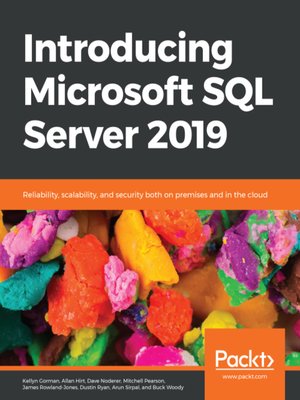Introducing Microsoft SQL Server 2019
ebook ∣ Reliability, scalability, and security both on premises and in the cloud
By Kellyn Gorman

Sign up to save your library
With an OverDrive account, you can save your favorite libraries for at-a-glance information about availability. Find out more about OverDrive accounts.
Find this title in Libby, the library reading app by OverDrive.



Search for a digital library with this title
Title found at these libraries:
| Library Name | Distance |
|---|---|
| Loading... |
Explore the impressive storage and analytic tools available with the in-cloud and on-premises versions of Microsoft SQL Server 2019.
Key FeaturesMicrosoft SQL Server comes equipped with industry-leading features and the best online transaction processing capabilities. If you are looking to work with data processing and management, getting up to speed with Microsoft Server 2019 is key.
Introducing SQL Server 2019 takes you through the latest features in SQL Server 2019 and their importance. You will learn to unlock faster querying speeds and understand how to leverage the new and improved security features to build robust data management solutions. Further chapters will assist you with integrating, managing, and analyzing all data, including relational, NoSQL, and unstructured big data using SQL Server 2019. Dedicated sections in the book will also demonstrate how you can use SQL Server 2019 to leverage data processing platforms, such as Apache Hadoop and Spark, and containerization technologies like Docker and Kubernetes to control your data and efficiently monitor it.
By the end of this book, you'll be well versed with all the features of Microsoft SQL Server 2019 and understand how to use them confidently to build robust data management solutions.
What you will learnThis book is for database administrators, architects, big data engineers, or anyone who has experience with SQL Server and wants to explore and implement the new features in SQL Server 2019. Basic working knowledge of SQL Server and relational database management system (RDBMS) is required.







